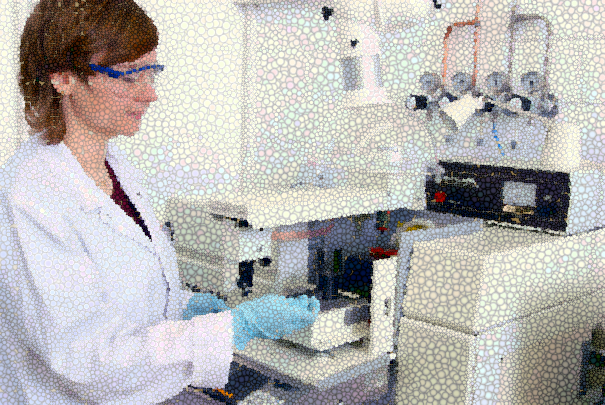
JRC scientists compared two analytical methods for homogeneity studies of 23 trace elements in two copper materials using their in-house available certified reference materials.
The study demonstrated that electrothermal-vaporisation inductively coupled plasma – optical emission spectrometry (ETV-ICP-OES) has a better performance than the other analysis method based on ICP-MS.
Many analytical methods for the determination of trace elements require the digestion of relative large amounts of sample (100 mg to 2 g), usually in concentrated acids as a first step. This digestion step is time consuming, creates hazardous waste and can also introduce errors in the analytical result.
Like pointillists that built their painting from small spots of colour, ETV-ICP-OES uses minute amounts of sample (below 5 mg), which are directly vaporised in a high-temperature graphite furnace. The resulting atom cloud is then transferred to an ICP-OES instrument for the quantification of the element content.
This method hence:
- does not use hazardous chemicals,
- does not require tedious sample preparation and
- is less prone to errors by contamination.
However, so there were doubts not only whether these minute sample intakes can be representative for real samples (i.e. whether the individual points really could make up a full picture), but also whether the method was sufficiently repeatable to deliver reliable results.
To answer these questions, JRC scientists, in collaboration with colleagues from the TU Bergakademie Freiberg, Spectro Analytical Instruments and Umicore organised a dedicated study within the production of the certified reference materials ERM-EB074 and ERM-EB075, which are copper materials certified for their element mass fractions.
Data for 23 elements (Ag, Al, As, Au, Bi, Cd, Co, Cr, Fe, In, Mg, Mn, Ni, P, Pb, Sb, Se, Si, Sn, Te, Ti, Zn and Zr) obtained using ETV-ICP-OES were compared to data for the same elements and materials obtained by digestion-based methods.
Contrary to expectations, the study found that the repeatability of ETV-ICP-OES was even better than the repeatability of the digestion based methods.
Because of this better repeatability, even tighter limits for the inhomogeneity of the materials could be established when using ETV-ICP-OES than using digestion methods. As an additional add-on, the minimum sample intake could be established directly from the data from ETV-ICP-OES.
The study demonstrated that ETV-ICP-OES can deliver reliable results and has the potential to become a real competitor to digestion based methods in the future.
Read more in: T. Bacquart et al.: "ETV-ICP-OES: a useful technique for homogeneity study of trace element in metals. Application to the homogeneity study of 23 elements in electrolytic copper", Accreditation and Quality Assurance 22 (2017) 125-139, doi:10.1007/s00769-017-1254-z
Related Content
Details
- Publication date
- 26 June 2017
